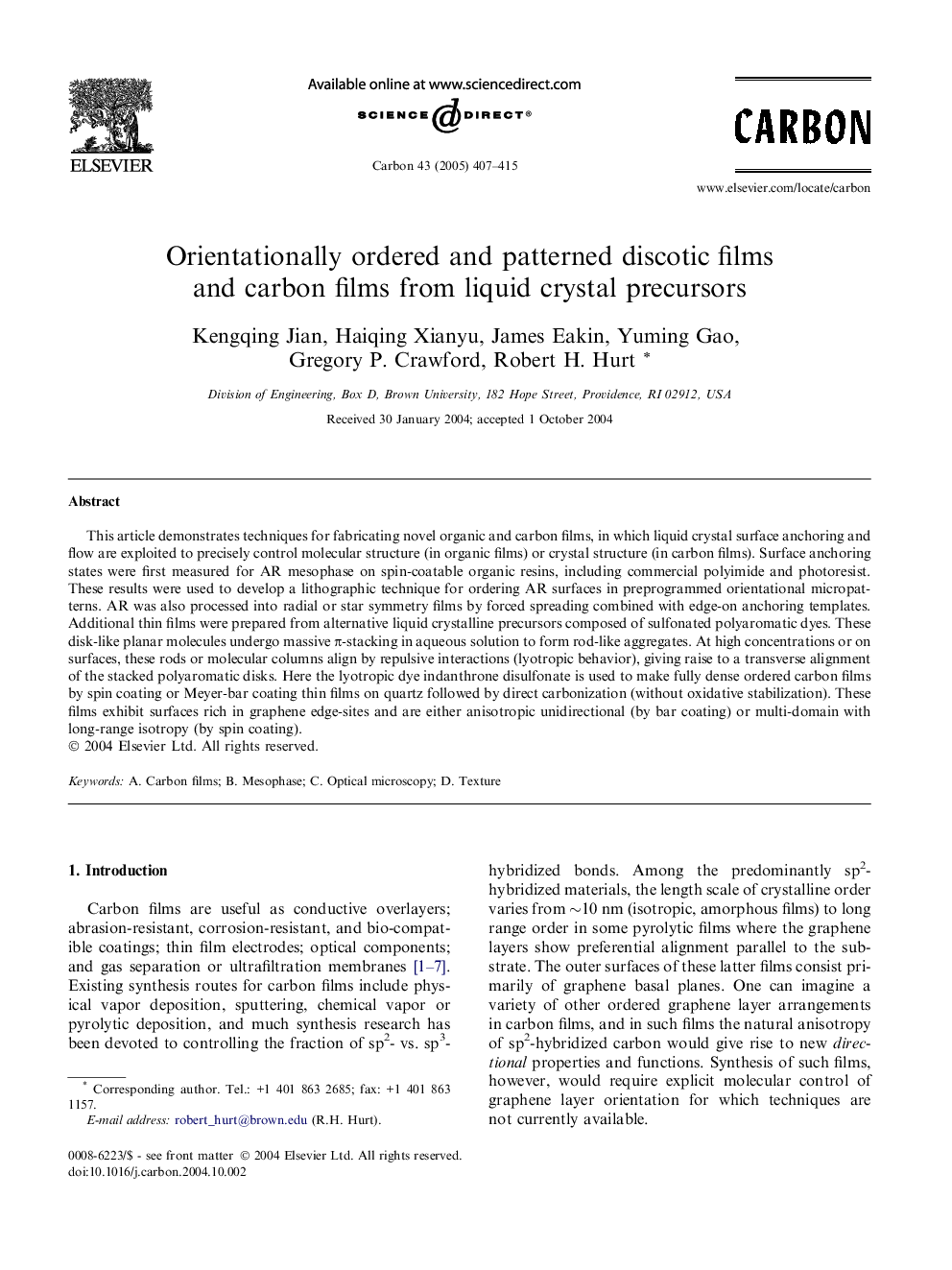| Article ID | Journal | Published Year | Pages | File Type |
|---|---|---|---|---|
| 10611380 | Carbon | 2005 | 9 Pages |
Abstract
This article demonstrates techniques for fabricating novel organic and carbon films, in which liquid crystal surface anchoring and flow are exploited to precisely control molecular structure (in organic films) or crystal structure (in carbon films). Surface anchoring states were first measured for AR mesophase on spin-coatable organic resins, including commercial polyimide and photoresist. These results were used to develop a lithographic technique for ordering AR surfaces in preprogrammed orientational micropatterns. AR was also processed into radial or star symmetry films by forced spreading combined with edge-on anchoring templates. Additional thin films were prepared from alternative liquid crystalline precursors composed of sulfonated polyaromatic dyes. These disk-like planar molecules undergo massive Ï-stacking in aqueous solution to form rod-like aggregates. At high concentrations or on surfaces, these rods or molecular columns align by repulsive interactions (lyotropic behavior), giving raise to a transverse alignment of the stacked polyaromatic disks. Here the lyotropic dye indanthrone disulfonate is used to make fully dense ordered carbon films by spin coating or Meyer-bar coating thin films on quartz followed by direct carbonization (without oxidative stabilization). These films exhibit surfaces rich in graphene edge-sites and are either anisotropic unidirectional (by bar coating) or multi-domain with long-range isotropy (by spin coating).
Related Topics
Physical Sciences and Engineering
Energy
Energy (General)
Authors
Kengqing Jian, Haiqing Xianyu, James Eakin, Yuming Gao, Gregory P. Crawford, Robert H. Hurt,
